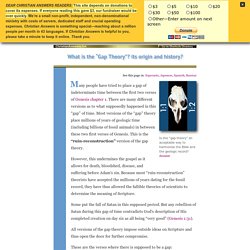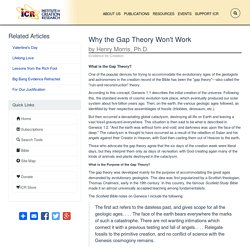

6000 Years.org. Odd Things in Wrong Places Every once in a while archaeologists (and sometimes regular Joes) make some remarkable discoveries.

Stunned, they are often unable to explain what it is they’ve found, how it came into existence, or ascertain its value. This is a comprehensive list of such artifacts; artifacts that many believe should have never existed given the discerned age/period of their creation. In June 1936 (or 1934 according to some accounts), Max Hahn and his wife Emma were on a walk when they noticed a rock with wood protruding from its core. They decided to take the oddity home and later cracked it open with a hammer and a chisel. As man digs and scrapes and drills into the mysterious earth, many surprising finds are made. One of the most prodigious lava flow in the history of the world occurred in the Pacific Northwest. Still, there are several curious things about this lava flow. One ancient shaft was drilled 210 feet down into solid rock. Bible, Genesis and Geology. Creation.com. Gap Theory. See this page in: Esperanto, Japanese, Spanish, Russian Is the “gap theory” an acceptable way to harmonize the Bible and the geologic record?

Answer Many people have tried to place a gap of indeterminate time between the first two verses of Genesis chapter 1. There are many different versions as to what supposedly happened in this “gap” of time. Most versions of the “gap” theory place millions of years of geologic time (including billions of fossil animals) in between these two first verses of Genesis. However, this undermines the gospel as it allows for death, bloodshed, disease, and suffering before Adam's sin. Some put the fall of Satan in this supposed period. All versions of the gap theory impose outside ideas on Scripture and thus open the door for further compromise. These are the verses where there is supposed to be a gap: In the beginning God created the heavens and the earth. Where did the “gap theory” come from? A Testimony of Struggle He then warns Christians: Fossil graveyard. God and Science.
How the Apostle Peter Relates to the Age of the Earth Debate. The Apostle Peter and Genesis When it comes to the discussion over the days of creation and the age of the earth, many people mistakenly think that the issue only involves the interpretation of the early chapters of Genesis.

However, it is important to remember that the teachings of the New Testament are also significant to this debate. Second Peter 3:1–7, for example, says that in the last days scoffers will come scoffing at the belief that Christ will come again. They will base their ideas upon the assumption that the world has not changed, deliberately ignoring two major events in the history of world: God’s supernatural Creation of the world and God’s judgment of the world by the historical, global, catastrophic Flood in the days of Noah. Peter’s understanding of these two events is key as it helps us see how the apostle read Genesis. . . . knowing this first: that scoffers will come in the last days, walking according to their own lusts, . . . (2 Peter 3:3) Conclusion. Old Earth Creationism. The Institute for Creation Research. What is the Gap Theory?

One of the popular devices for trying to accommodate the evolutionary ages of the geologists and astronomers in the creation record of the Bible has been the "gap theory"—also called the "ruin-and-reconstruction" theory. According to this concept, Genesis 1:1 describes the initial creation of the universe. Following this, the standard events of cosmic evolution took place, which eventually produced our solar system about five billion years ago. Then, on the earth, the various geologic ages followed, as identified by their respective assemblages of fossils (trilobites, dinosaurs, etc.). But then occurred a devastating global cataclysm, destroying all life on Earth and leaving a vast fossil graveyard everywhere. Those who advocate the gap theory agree that the six days of the creation week were literal days, but they interpret them only as days of recreation, with God creating again many of the kinds of animals and plants destroyed in the cataclysm. * Dr.